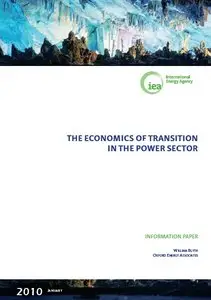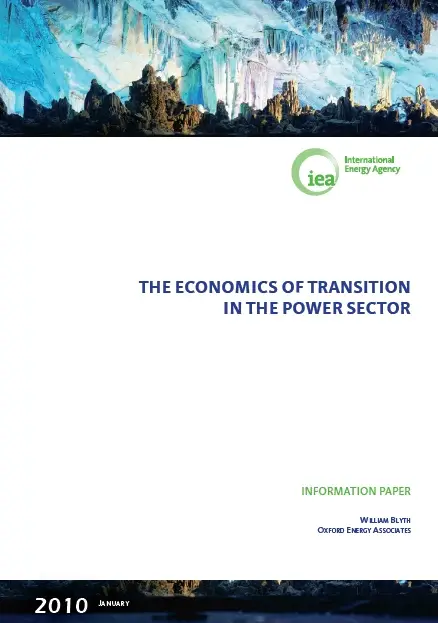"The Economics of Transition in the Power Sector" by William Blyth
International Energy Agency | 2010 | ISBN: 9264084292 | 34 pages | PDF | 5 Mb
International Energy Agency | 2010 | ISBN: 9264084292 | 34 pages | PDF | 5 Mb
Power generation from fossil fuel is one of the largest sources of greenhouse gas emissions, representing 41% of global energy-related CO2 emissions. Combined with the fact that there are a number of low-carbon technologies available for generating electricity, the sector is therefore a key policy target for delivering near-term and long-term reductions in emissions.
This report identifies the importance of these risk factors in the economics of transition by illustrating the case of investment in the power sector.
ES Download • | • iFi Mirror
To a great extent, the transition to a lowcarbon power sector means dealing with coal plants, which is the largest contributor, accounting for 73% of global power sector CO2 emissions, and particularly those from the United States, Europe and China, which contribute 17%, 9% and 24% respectively of global power sector CO2 emissions.
Table of Contents
1. Introduction – Global context
2. US coal case study
3. Plant refurbishment options
4. Micro-economics of refurbish vs. replace decisions
-The need for a micro-economic perspective
-The option value of waiting
-Key drivers of option value
-Implications for refurbishment vs. replacement
5. The wider power system context
6. Conclusions
Appendix. Model assumptions
More : You find here



